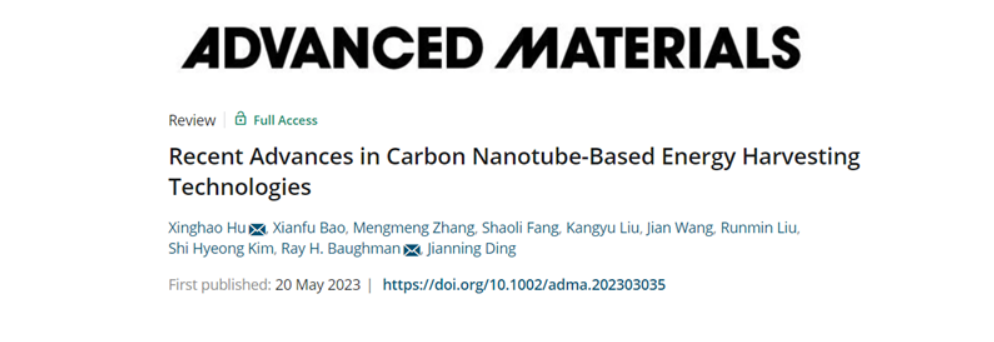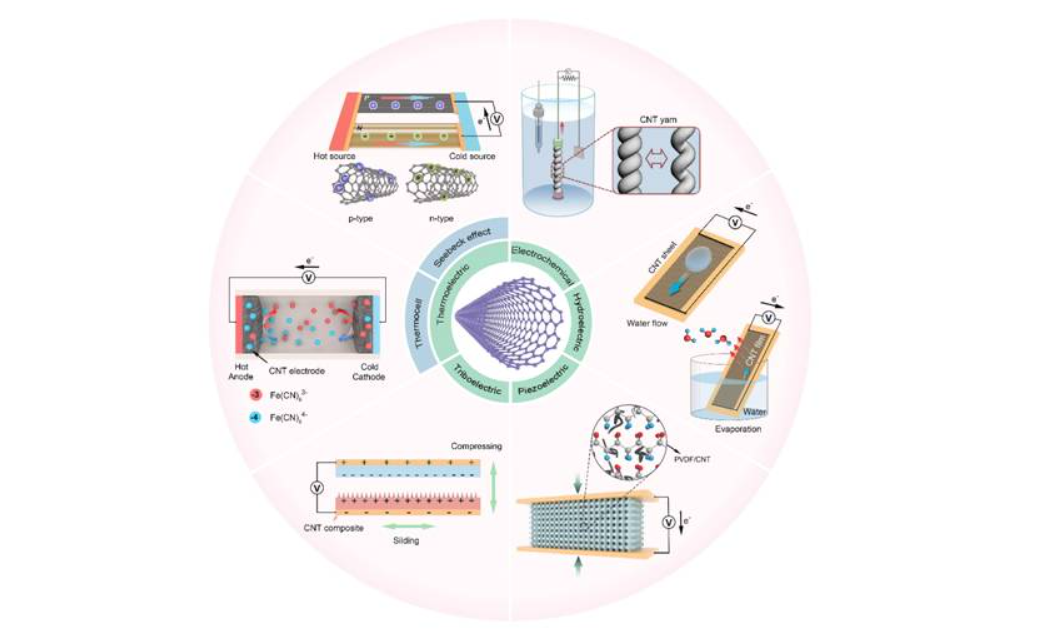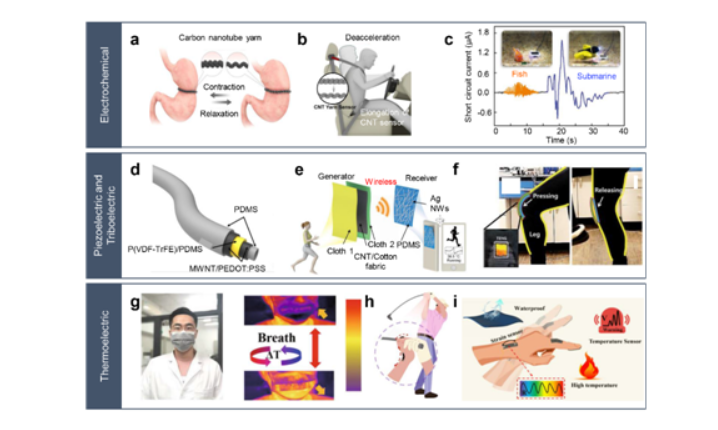As global warming intensifies and the concepts of energy conservation, emission reduction and carbon neutrality become more and more popular, the development of new energy harvesting technologies is becoming more and more urgent. In recent years, various energy harvesting technologies have emerged. Among them, nanogenerator technologies utilizing electrochemical, hydrovoltaic, friction, piezoelectric, and thermoelectric effects are developing rapidly. Carbon nanotubes (CNTs), a functional nanomaterial with high electrical conductivity\high thermal conductivity and excellent electrochemical and mechanical properties, are widely used in the field of nanogenerators. However, the principle of CNT-based nanogenerator technology is not well understood and its performance still needs to be improved.
Recently, Associate Professor Hu Xinghao and others from Jiangsu University have published a review article entitled "Recent Advances in Carbon Nanotube-Based Energy Harvesting Technologies" in Advanced Materials. The article comprehensively reviews the CNT-based energy harvesting technologies. The article provides a comprehensive review of CNT-based energy harvesting technologies, including electrochemical, hydrovoltaic, friction electric, piezoelectric, and thermoelectric generators. The working principles, typical examples, and future challenges and development directions of the different power generation technologies are highlighted. The first author of the paper is Associate Professor Xinghao Hu, Master's student Xianfu Bao, and Postdoctoral Fellow Mengmeng Zhang of the University of Texas at Dallas, USA, and the corresponding authors are Associate Professor Xinghao Hu of Jiangsu University and Academician Ray H. Baughman of the University of Texas at Dallas, with Jiangsu University as the first author.
This work was supported by the National Natural Science Foundation of China (52105057, 92248301), the National Postdoctoral Foundation of China (2021M691307, 2022T150274), and the Science and Technology Program of Jiangsu Province (BK20200916).


Fig. 1. General description of CNT-based power generation devices with different forms of energy inputs

Fig. 2 CNT-based generators based on different power generation principles

Fig. 3 CNT-based sensors based on different power generation principles
In this paper, the working principles, application examples, challenges and directions of development of various carbon nanotube-based generators are described in detail, and their applications in micro-generators and self-supplied energy sensors are illustrated. This paper is a guide and reference for the design of CNT nanogenerators.
Link to article:https://onlinelibrary.wiley.com/doi/abs/10.1002/adma.202303035
